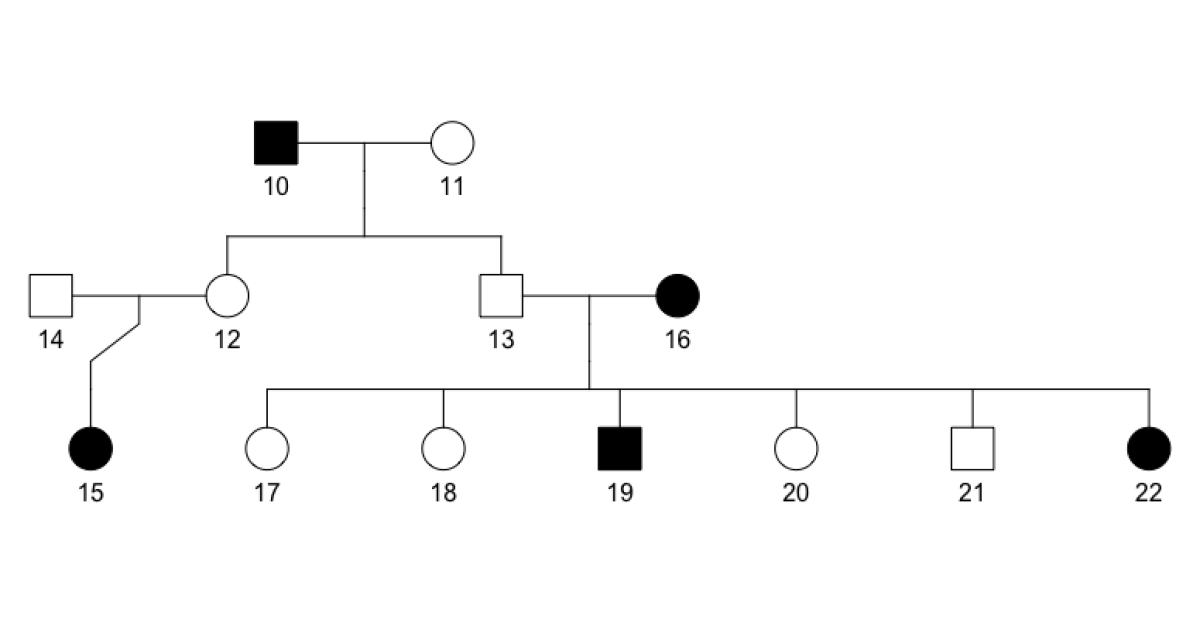PhD project Justin Timm

PhD project Justin TimmHow do secondary school students perform pedigree analyzes?
Human genetic pedigrees are a discipline-specific form of representation for documenting the occurrence of genetic traits, often diseases, within a family (Bennett, Steinhaus French, Resta, & Lochner Doyle, 2008). Among other things, they allow conclusions to be drawn about the underlying mode of inheritance, as well as the assessment of the individual genetic risk of developing the trait or disease in expected/planned offspring (genetic counseling). Answering these questions requires context-specific problem-solving skills (Hackling, 1994; Hackling & Lawrence, 1988; Smith, 1988), which, following the German educational standards in the subject of biology for the secondary school leaving certificate, should already be developed within genetics classes at the secondary level (grades 9-10). In the upper secondary level, usually 12th grade, pedigree-based problem-solving tasks are studied again, whereas this time the X-linked modes of inheritance must also be taken into account. Human genetic pedigrees are widely used as context-specific representations and problem-solving tasks in genetics classes but are considered as rather complex (Knippels, Waarlo, & Boersma, 2005). Nevertheless, secondary students’ approaches when analyzing pedigree problems has been little researched.

As part of this PhD project the problem-solving process of secondary school students will be examined in detail. A first study is expected to answer the question which strategies students use to determine the mode of inheritance, and which arguments they formulate during their analysis. A second study ought to determine the influence of potential predictor variables, such as factual knowledge in genetics and universal reasoning skills, on the ability to identify the mode of inheritance. The findings from both studies will be used to develop a digital learning environment in which students can practice pedigree analysis. The first aim is to automatically generate and analyze pedigrees to overcome the current limitations regarding the number of suitable problems (cf. Timm et al., 2020). The second aim relates to the development of adaptive feedback, which addresses systematic errors that are to be identified in the first study or the existing literature.
Project-based publication(s)
Timm, J., Otto, B., Schramm, T., Striewe, M., Schmiemann, P., & Goedicke, M. (2020). Technical aspects of automated item generation for blended learning environments in biology. I-Com, 19(1), 3–15. https://doi.org/10.1515/icom-2020-0001
Timm, J., Wools, K., & Schmiemann, P. (2022). Secondary Students’ Reasoning on Pedigree Problems. CBE—Life Sciences Education, 21(1), ar14. https://doi.org/10.1187/cbe.21-01-0009
Timm, J., Oberste, N., & Schmiemann, P. (2023). Which factors influence the success in pedigree analysis? International Journal of Science Education, 45(3), 1-19. https://doi.org/10.1080/09500693.2022.2155494
Timm, J., & Schmiemann, P. (2023). Mit der Lern-App „pedana“ Stammbäume analysieren. Unterricht Biologie, 47(485), 46-47.
References
Bennett, R. L., Steinhaus French, K., Resta, R. G., & Lochner Doyle, D. (2008). Standardized human pedigree nomenclature: Update and assessment of the recommendations of the national society of genetic counselors. Journal of Genetic Counseling, 17(5), 424–433. https://doi.org/10.1007/s10897-008-9169-9
Hackling, M. W. & Lawrence, J. A. (1988). Expert and novice solutions of genetic pedigree problems. Journal of Research in Science Teaching, 25(7), 531-546. https://doi.org/10.1002/tea.3660250703
Hackling, M. W. (1994). Application of genetics knowledge to the solution of pedigree problems. Research in Science Education, 24, 147-155. https://doi.org/10.1007/BF02356339
Knippels, M.-C. P. J., Waarlo, A. J., & Boersma, K. T. (2005). Design criteria for learning and teaching genetics. Journal of Biological Education, 39(3), 108–112. https://doi.org/10.1080/00219266.2005.9655976
Smith, M. U. (1988). Successful and unsuccessful problem solving in classical genetic pedigrees. Journal of Research in Science Teaching, 25(6), 411-433. https://doi.org/10.1002/tea.3660250602
Timm, J., Otto, B., Schramm, T., Striewe, M., Schmiemann, P., & Goedicke, M. (2020). Technical aspects of automated item generation for blended learning environments in biology. I-Com, 19(1), 3–15. https://doi.org/10.1515/icom-2020-0001
